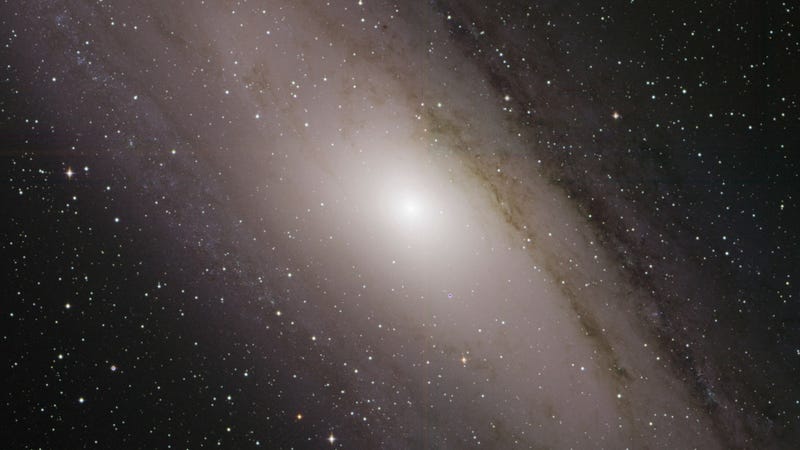
A new sky survey project has released its first round of incredible data, results, and images, including this amazing new view of our neighboring Andromeda galaxy.
One theme that goes all the way back to the earliest days of astronomy is the observation of transients—things that change in the night sky. The Zwicky Transient Facility (ZTF) is a new project designed to study these transient events, including stars slamming into black holes, supernovae, and asteroids. The researchers behind ZTF are gathering data using a new state-of-the-art, wide-angle camera attached to the Samuel Oschin Telescope at the Palomar Observatory in southern California

“This is only the very tip of the iceberg,” George Helou, co-investigator on the ZTF and executive director of the Infrared Processing and Analysis Center at Caltech, told Gizmodo. “We’re just starting to see the exciting things.”
While many of us non-astronomers are mainly excited about the amazing images, ZTF’s first release of scientific results includes some surprising finds. The instrument has already found 1,100 supernovae (the massive explosions of large stars collapsing in on themselves) and 50 near-Earth asteroids, including two near-Earth asteroids that passed within 72,000 and 76,000 miles of the Earth, as well as asteroid 2019 AQ3, which has the shortest known orbital time around the Sun of any asteroid. Its orbit lies entirely within Earth’s circle around the Sun.
Advertisement
The scientific drop includes papers describing these first results, as well as methods to classify and compile the project’s data, software, and alert system.
The $24 million, 578-megapixel camera can photograph the entire northern sky every three days, and has been releasing reports on the Astronomers Telegram since last summer. As much of its funding comes from the U.S. government, much of its data is public, according to a press release.

Advertisement
While Helou was excited about the hardware, he was equally as excited about the software, which employs data analysis techniques like machine learning in order to pick meaningful information out of the heaps of data.
“Scientists need to do statistical analyses to find the needles in the haystack,” he said. “If you look at the effort that goes into the tools scientists use to do their science, in the end the data side and the data analysis will probably exceed the investment into the hardware.”
The ZTF is state of the art, but it’s a taste of what to come. The astronomy community will soon have another wide-angle sky-surveying camera, the Large Synoptic Survey Telescope, which is scheduled to begin operations in 2022. That facility will sit atop a mountain the Chilean desert and will have a 3.2-gigapixel camera. It will peer even deeper into space than ZTF, similarly imaging the whole sky at once.
Advertisement
But the new, larger project won’t make ZTF obsolete—it’s doing important science in its own right, and the methods developed at the California facility will find important application in the LSST.
https://gizmodo.com/first-images-from-new-night-sky-camera-in-california-sh-1832439383Bagikan Berita Ini















0 Response to "First Images from New Night-Sky Camera in California Show Gorgeous View of Andromeda Galaxy - Gizmodo"
Post a Comment